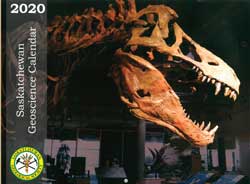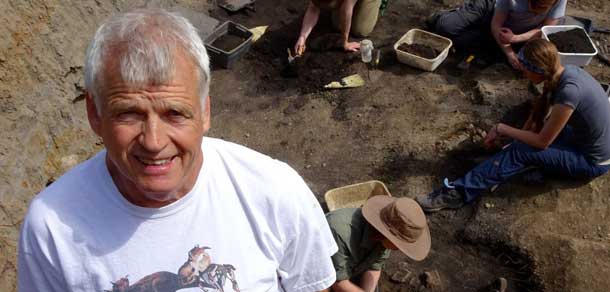Make no bones about it – the subject of dinosaurs is one that has captivated the imaginations of children and adults ever since the terrible reptiles were first discovered nearly 200 years ago.
This was certainly the case with Philip Currie, guest speaker at the Professional Development Luncheon. Currie’s interest in dinosaurs began at the age of six when toy dinosaurs were offered as prizes in boxes of Rice Krispies.
“Unfortunately my mom wouldn’t let me just dump out the box to get to the prize. I had to eat all the Rice Krispies first. To this day, I can’t stand to eat Rice Krispies anymore.”
From the toys, Currie graduated to a popular children’s book, All About Dinosaurs by Roy Chapman Andrews, which started him on his lifelong voyage of discovery on the topic.
After graduating from paleontology in Ontario, Currie soon headed west to Alberta, one of the great capitals of dinosaur discovery in the world.
According to Currie, American paleontologist Barnum Brown discovered the significance of the Alberta sites in the early years of the 20th century. Brown shipped cartloads of bones out of Alberta to museums in New York. In fact, Currie noted, many of the museum displays throughout North America come from Alberta sites. Some of Brown’s most important discoveries lay forgotten in the stockpile of the American Natural History Museum until Currie rediscovered them.
Dinosaur bones are so common in some parts of Alberta that, according to Currie, there are fields where you can’t walk without tripping over them. Since this was such a common experience, local people did not fully appreciate the significance of where they lived until the United Nations declared Alberta’s Dinosaur Provincial Park – a place known as “the mother of bones” – a UNESCO World Heritage Site in 1980.
 This became a great boon to the local tourism industry. Not only did the Royal Tyrell Museum of Paleontology become a multi-million dollar a year tourist attraction, but numerous smaller museums popped up around the region (including the Philip Currie Museum in Grande Prairie).
This became a great boon to the local tourism industry. Not only did the Royal Tyrell Museum of Paleontology become a multi-million dollar a year tourist attraction, but numerous smaller museums popped up around the region (including the Philip Currie Museum in Grande Prairie).
Although Currie and his teams have made innumerable important finds, one that he finds particularly important is their discovery of a near complete skeleton of Ornithomimus, a species that helped paleologists make the connection between dinosaurs and birds. Among its other features were markings suggestive of feathers. This has been supported by discoveries of feathers, presumed to be from dinosaurs, preserved in amber.
Another of Currie’s favourite discoveries was the skeleton of the Saurornitholestes, a dinosaur related to the famous Velociraptor. The skeleton was displayed at the 2016 Dinosaur Expo in Tokyo where it was viewed by an estimated 1.4 million people.
Outside of Alberta, Currie has also done work in Mongolia, another of the world’s major areas of dinosaur discovery. The Mongolian sites suffer from problems with theft and vandalism so the Mongolian government has reached out to the United States to help them track down poachers trying to sell bones to museums and private collectors.
Looking at the field of paleontology more broadly, Currie noted that the topic of dinosaurs is so popular that paleontologists enjoy the enthusiastic support of scientists in other fields who have helped them make important discoveries.
For example, Currie observed that there is a misconception that dinosaurs lived in tropical areas. In fact, their reptilian nature led them to be more attracted to temperate areas, away from extremes of temperature. Some dinosaurs even regularly migrated to what we would today regard as the polar regions (but before the ice caps) because they enjoyed the long hours of sunlight in the summer months.
In conclusion, Currie noted that there is a certain irony to the field of paleontology. Although a field that studies long-dead animals might seem static, paleontologists are finding new species and making new discoveries all the time. This has been reflected in the explosion of the field on the professional level.
“Fifty years ago, there were maybe six people working full-time in paleontology worldwide. Today, there are 150. Dinosaurs may be dead but the work of studying them is alive and well.”
